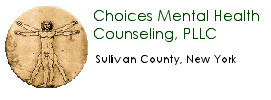Submitted by tomrue on
For self-awareness and to observe the effect of treatment over time, people with mood disorders like bipolar disorder or depression sometimes find it useful to keep a record tracking their emotions. These charts are called mood logs and can be discussed with the doctor who prescribes medication, in counseling sessions, or be kept private.
Examples and comments can be found on the website of Massachusetts General Hospital, Bipolar Clinic and Research Center. Under Tools for Everyone there's an article on "information on mood charting" and a blank mood chart (requires Acrobat Reader) along with a sample of a completed chart. Another site offers printable blanks, complete with instructions, is Round the Clock Resources for Psychiatry.
There's no right or wrong way to keep a mood chart. It can be scratched informally in a school notebook or personal journal, or more elaborate. However, if the intent is to share the data with a therapist or other healthcare provider, it's important to use a consistent and understandable method.
ChronoRecord Association of Fullerton, California has demonstrated that keeping mood logs on the computer can be an equally valid measure as paper and pen. The patented software is inexpensive ($25) and easy to use. Users e-mail encrypted data files to a psychologist at the association who sends back encrypted Acrobat files containing colorful charts that track not only moods, but medications, sleep patterns, and (for women) menstrual cycles. In addition to the value of the charts themselves, ChronoRecord participants can take satisfaction in knowing that the data they submit is serving the cause of science. Aggregated data, stripped of any identifying information, allows behavioral researchers to look for patterns in the experience of recovery from depression.
For those who can't afford the $25, or who perhaps would rather not send their personal information sailing across the Internet, securely encrypted or not, Dr. Jim Phelps offers some free spreadsheets and word-processing documents for downloading. He recommends using Open Source software rather than the pricey MS Office.
Patient-kept logs allow healthcare providers to provide better care by giving some quantitative insight to how moods are experienced internally. It's impossible to get inside another person's head, but improved communication is a step in the right direction. By their nature log entries are subjective since that's the essence of human experience. Truly objective measures are impossible in human relations since people are not objects. Though instructions and methods vary, one approach is to advise journalers to define emotinoal "anchors" for themselves. For example, remember back over your life for the time that you felt the deepest depression. And then search your memory for the highest high, whether that was a manic point (for someone with bipolar disorder) or a peak spiritual experience like a wedding or other special time. Each person's chart will be unique, depending on the landmark experiences they recall.
And of course, there's always the old standby of the notebook and pen. Some related links on journaling are located here.
